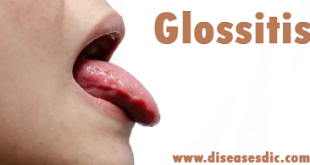Definition
Vasomotor rhinitis (VMR) is a condition in which the blood vessels lining the nose swell leading to nasal congestion, and in which the mucus glands in the nose become overactive leading to excessive drainage. It is usually associated with a loss of control of the nose’s function. The healthy nose will swell and secrete fluid in response to air that is dirty or very cold. In vasomotor rhinitis, the nose swells and secretes mucus and fluid to minor irritations. Clear, runny, nasal congestion and postnasal drainage are the usual complaints. Irritating triggers can include: smoke, dust, sprays, smells, perfume, alcohol, chemicals, wind or a fan blowing in the face, rapid chilling or heating of the body, newsprint, and perfumes. This can presents with profuse, watery runny nose or congestion in association with eating hot or spicy foods. Laying down increases nasal stuffiness, in contrast, exercise reverses nasal congestion temporarily. Seventy percent develop the condition after age 20; by comparison, the onset of allergic rhinitis usually occurs before age 20. The majority are female, with a reported predominance between 55 and 71 percent. Usually symptoms are all year and without specific allergic triggers.
Epidemiology
Vasomotor rhinitis is the most common form of nonallergic rhinitis, comprising approximately 71% of all nonallergic rhinitis conditions. Although the epidemiology of this subtype of nonallergic rhinitis has not been definitively studied, it is estimated that 14 million Americans suffer from vasomotor rhinitis, with a worldwide prevalence approaching 320 million.
Risk factors of Vasomotor Rhinitis
Factors that may increase your risk of nonallergic rhinitis include:
Exposure to irritants: If you’re exposed to smog, exhaust fumes or tobacco smoke- to name a few you may be at increased risk of developing nonallergic rhinitis.
Being older than age 20: Unlike allergic rhinitis, which usually occurs before age 20, often in childhood, nonallergic rhinitis occurs after age 20 in most people.
Prolonged use of decongestant nasal drops or sprays: Using over-the-counter decongestant nasal drops or sprays (Afrin, Dristan, others) for more than a few days can actually cause more severe nasal congestion when the decongestant wears off, often called rebound congestion.
Being female: Due to hormonal changes, nasal congestion often gets worse during menstruation and pregnancy.
Occupational exposure to fumes: In some cases nonallergic rhinitis is triggered by exposure to an airborne irritant in the workplace (occupational rhinitis). Some common triggers include aircraft fuel or jet exhaust, solvents, or other chemicals and fumes from decomposing organic material such as compost.
Having certain health problems: A number of chronic health conditions can cause or worsen rhinitis, such as hypothyroidism and chronic fatigue syndrome.
Causes of Vasomotor Rhinitis
The cause of vasomotor rhinitis3 cannot always be pinpointed, but below are certain conditions that have caused vasomotor rhinitis in some individuals:
- Medications
- Hormonal changes such as pregnancy
- Certain activities such as intense exercise or sexual activity
- Eosinophilia syndrome (a condition in which immune system cells called eosinophils flock in large numbers to certain areas or organs of the body in which they are not normally present)
Certain conditions could predispose you to the development of vasomotor rhinitis, including a history of nasal trauma or a history of gastroesophageal reflux disease (GERD).
Some experts believe that people who are prone to the development of vasomotor rhinitis may have an overly sensitive autonomic nervous system.
Symptoms
Symptoms of vasomotor rhinitis include persistent or sporadic congestion or runny nose. Less common symptoms include sneezing and irritation.
Common symptoms of vasomotor rhinitis
You may experience vasomotor rhinitis symptoms daily or just once in a while. At times any of these symptoms can be severe:
- Nasal drainage (rhinorrhea)
- Nasal irritation
- Nasal itching (nasal pruritus)
- Runny nose (nasal congestion)
- Sneezing
Symptoms that might indicate a serious condition
In some cases, vasomotor rhinitis can result in serious symptoms. Seek prompt medical care if you have severe pain or excessive, persistent nasal drainage that interferes with daily life.
Vasomotor Rhinitis complications
Left untreated, nonallergic rhinitis may cause persistently blocked nasal passages or a constantly runny nose. These conditions can cause complications including:
- Middle ear infections
- Nasal polyps
- Sinusitis, an inflammation of the sinus cavities
- Difficulty sleeping, and a tired feeling during the day
- Irritability
- Difficulty concentrating
Diagnosis and test
There isn’t a certain test that tells you if you have nonallergic rhinitis. Your doctor will give you a physical exam and ask you about the symptoms that you have. The only way to be sure that allergies aren’t the cause of your symptoms is with an allergy test. There are two kinds of tests you doctor might order for you:
- Blood test: This measures the amount of immunoglobulin E (IgE) antibodies in your blood to see if your immune system has had a response to certain allergens.
- Skin test: Your doctor will prick your skin with a needle and expose it to a small amount of something that causes allergies in many people, such as mold, pollen, or pet dander. If you’re allergic to any of them, you’ll break out in a bump like an insect bite at that place on your skin.
Your doctor will also want to be sure that a problem in your sinuses such as a growth (polyp) or a deviated septum isn’t the cause of your symptoms. To check this, they may order one of 2 imaging tests to look inside your sinuses.
- Nasal endoscopy: Your doctor will put a narrow fiber-optic tube called an endoscope into your nostrils to look at your sinuses and nasal passages.
- CT scan: This is a computerized X-ray that makes highly detailed pictures of your sinuses.
Treatment and medications
Non-drug, non-surgical
Normal saline nasal douches.
Drug Therapy
Antihistamines have a variable response. They seem to help a few patients whose main symptom is runny nose, and usually when the rhinitis is mixed vasomotor and allergic.
Anticholinergic agents
Atrovent (Ipratromium bromide) nasal spray is effective in patients who have runny nose as their main symptoms.
Nasal steroids
Topical steroids help with congestion, runny nose, and sneezing. They suppress the local inflammatory response caused by vasoactive mediators by inhibiting Phospholipase A2, reduce the activity of acetylcholine receptors, and decrease basophil, mast cell, and eosinophil counts. They do not start working immediately, but when they do, they seem to control all the symptoms. Some adverse effects are mucosal swelling, mild redness, burning or stinging upon application, drying of the mucosa, nosebleeds, and nasopharyngeal thrush.
Decongestants
Decongestants, or sympathomimetic agents, are used mostly for congestion.
Examples include:
- Pseudoephedrine (Sudafed) tablets: Systemic adverse effects include nervousness, insomnia, irritability, and difficulty urinating in elderly males. They are contraindicated in persons with labile or overt hypertension. Decongestants have not been shown to have an effect on blood pressure in normotensive patients.
- Oxymetazoline (Drixine) nasal sprays
- Xylometazoline (Otrovine) nasal spray
Typically, these drugs can cause Rhinitis Medicamentosa (a rebound congestion which occurs after taking topical formulations of these drugs for more than five days).
Surgery
If the rhinitis does not respond to drug therapy, very rarely surgical procedures can be considered. Some of the procedures that have been performed in the past include:
- Cryosurgery affects the mucosa and submucosa, making it a quite successful procedure for congestion. However, there is sometimes prolonged post-operative nasal congestion and the possibility of damage to the nasal septum.
- Vidian neurectomy disrupts both sympathetic and parasympathetic fibers to the mucosa and it mainly diminishes rhinorrhea. If chronic hypertrophic changes appear in the mucosa, a number of surgical procedures can be tried. These include:
- Cauterization can be accomplished via silver nitrate or electrical current, however it only affects the mucosa.Cryosurgery is considered superior to cauterization because it also affects the submucosa.
- Submucosal resection of the conchal bone is a difficult procedure with much post-operative bleeding. Partial or total inferior turbinate resection works well for nasal congestion but can give post-operative bleeding and crusting.
Prevention of Vasomotor Rhinitis
Prevention of non-allergic rhinitis includes identifying and avoiding things that make the rhinitis worse. Practicing good hygiene by washing hands regularly and covering the mouth and nose when coughing and sneezing, can be helpful in preventing the spread of viral infections and non-allergic rhinitis. If a medication is found to the cause, this may be able to be stopped or replaced with a medication which does not have this side effect.
 Diseases Treatments Dictionary This is complete solution to read all diseases treatments Which covers Prevention, Causes, Symptoms, Medical Terms, Drugs, Prescription, Natural Remedies with cures and Treatments. Most of the common diseases were listed in names, split with categories.
Diseases Treatments Dictionary This is complete solution to read all diseases treatments Which covers Prevention, Causes, Symptoms, Medical Terms, Drugs, Prescription, Natural Remedies with cures and Treatments. Most of the common diseases were listed in names, split with categories.







